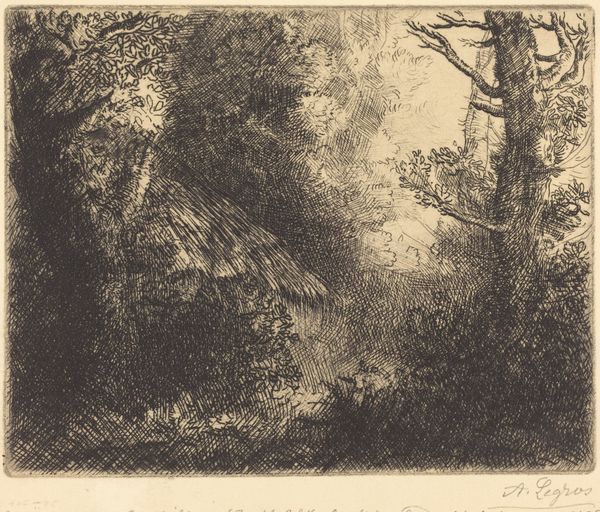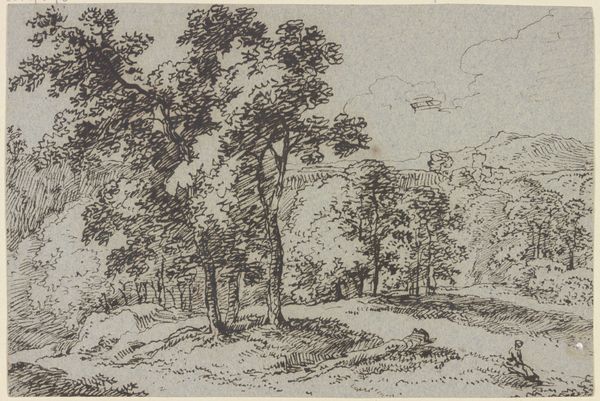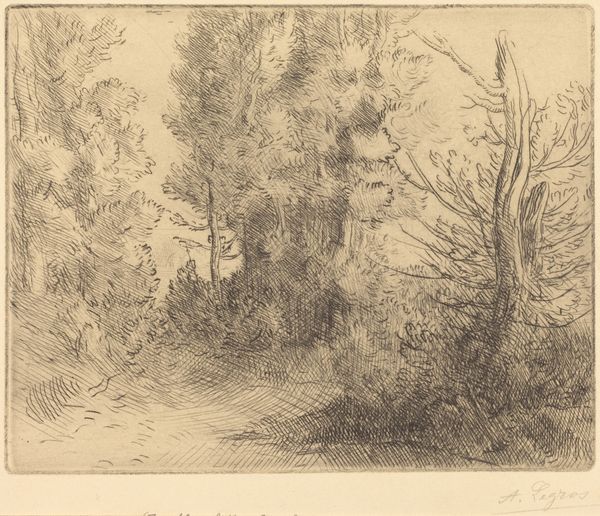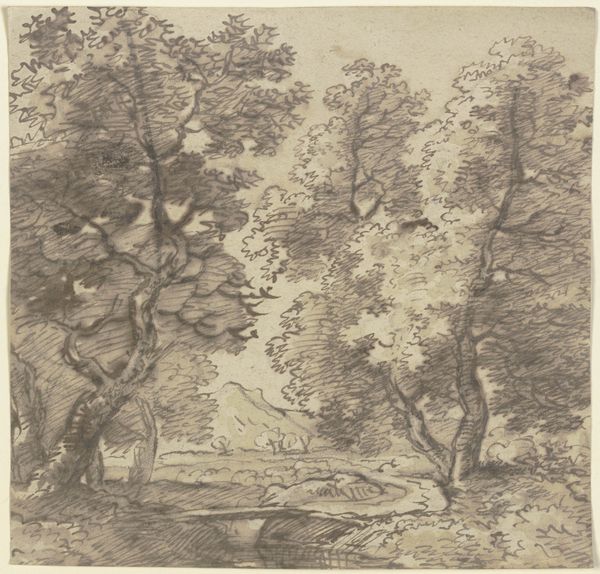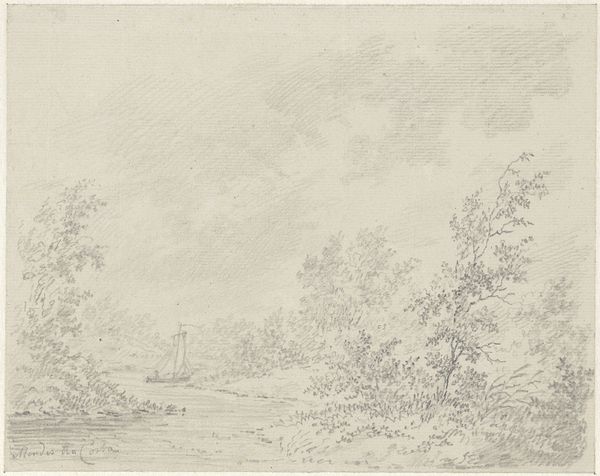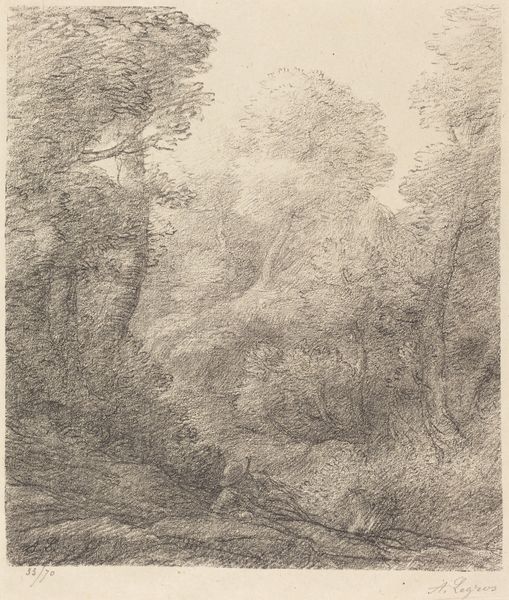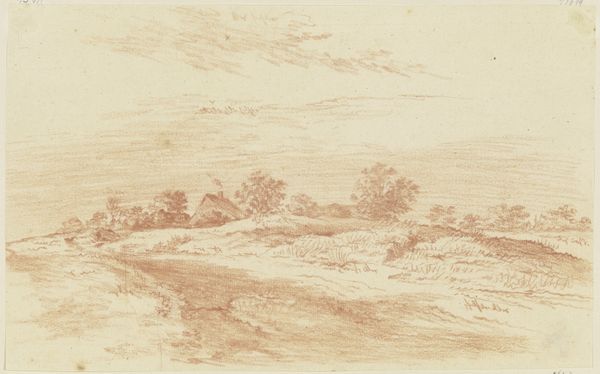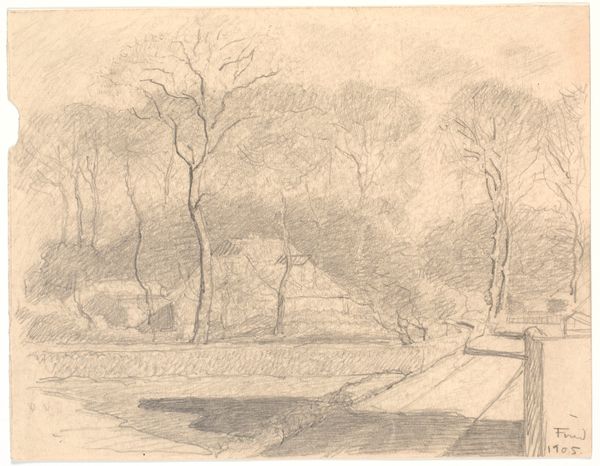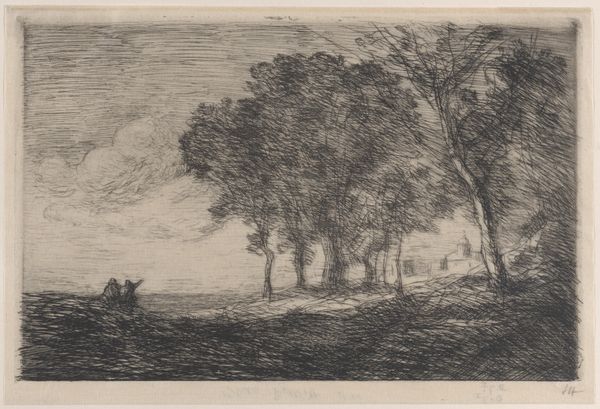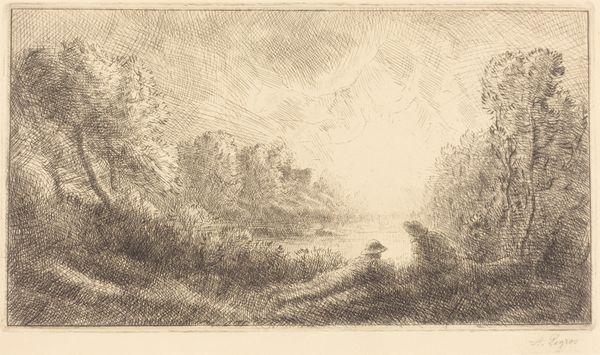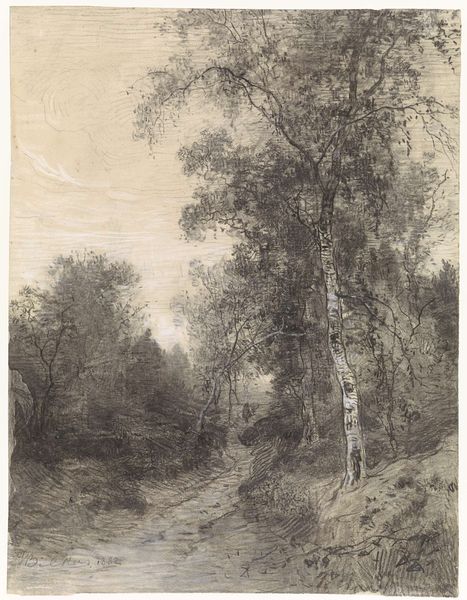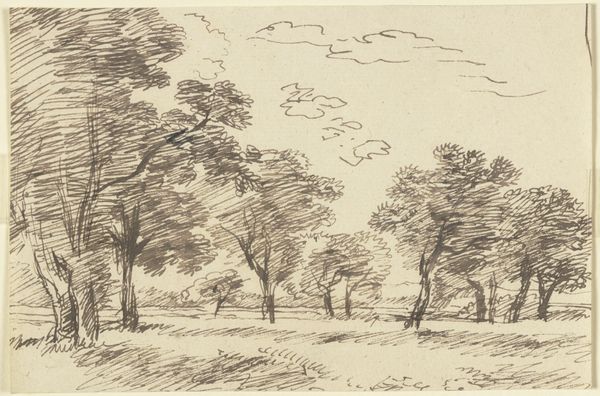
Dimensions: 158 × 191 mm
Copyright: Public Domain
Curator: Here we have Thomas Gainsborough’s "A Sunlit Path through a Wood," created sometime in the 1750s. Editor: It’s evocative, almost dreamlike. The charcoal and graphite blend together to give this forest scene a rather soft, contemplative feel. Curator: Gainsborough, of course, is lauded for his portraiture, but landscapes such as this one, offer an important intersectional view, complicating the binary between nature and elite society that marked his era. They show an evolving relationship with nature as both an aesthetic ideal and a site of leisure for the landed gentry. Editor: Yes, and consider the materials he employed. Pencil and graphite, humble materials in themselves, capable of immense detail and expression. We’re not looking at the lavish displays of oil paint on canvas typically associated with high society portraiture; instead, it is a much more democratic medium, a study, and a precursor. What narratives are embedded in his practice, thinking through material use and the social and material conditions from which he came? Curator: It makes us rethink notions of access and privilege during that period, not merely for wealthy landowners to wander those trails, but to see Gainsborough thinking through a connection between pastoral scenes and social structures. What do you think about that fence right along that path? How is he asking us to think about this natural scenery as being manicured, cultivated? Editor: Exactly! This gate indicates property and restricted use of landscape in the social context, and in his studio. Gainsborough himself controlled access to image creation: production and the aesthetic encounter for those outside his immediate social circles. So even in this sketch, we witness power relations at work and in this setting it can serve as a means of defining Englishness or nation identity. Curator: That's insightful. The drawing reveals how seemingly idyllic scenery is embedded within a web of power, labour, and ownership. It underscores how access to, and representations of, nature were not equally distributed, exposing both the romanticism and the very real economic stratification of the era. Editor: Precisely, seeing how this connects back to those broader systems through its materials, its making, we start questioning traditional artistic value systems in his oeuvre and their effect in subsequent generations. Curator: This has provided new considerations on not only the technical process but also the relationship between art, social equity and history. Editor: Absolutely, an insightful perspective that reframes how we value both labor and artistic expression.
Comments
No comments
Be the first to comment and join the conversation on the ultimate creative platform.
